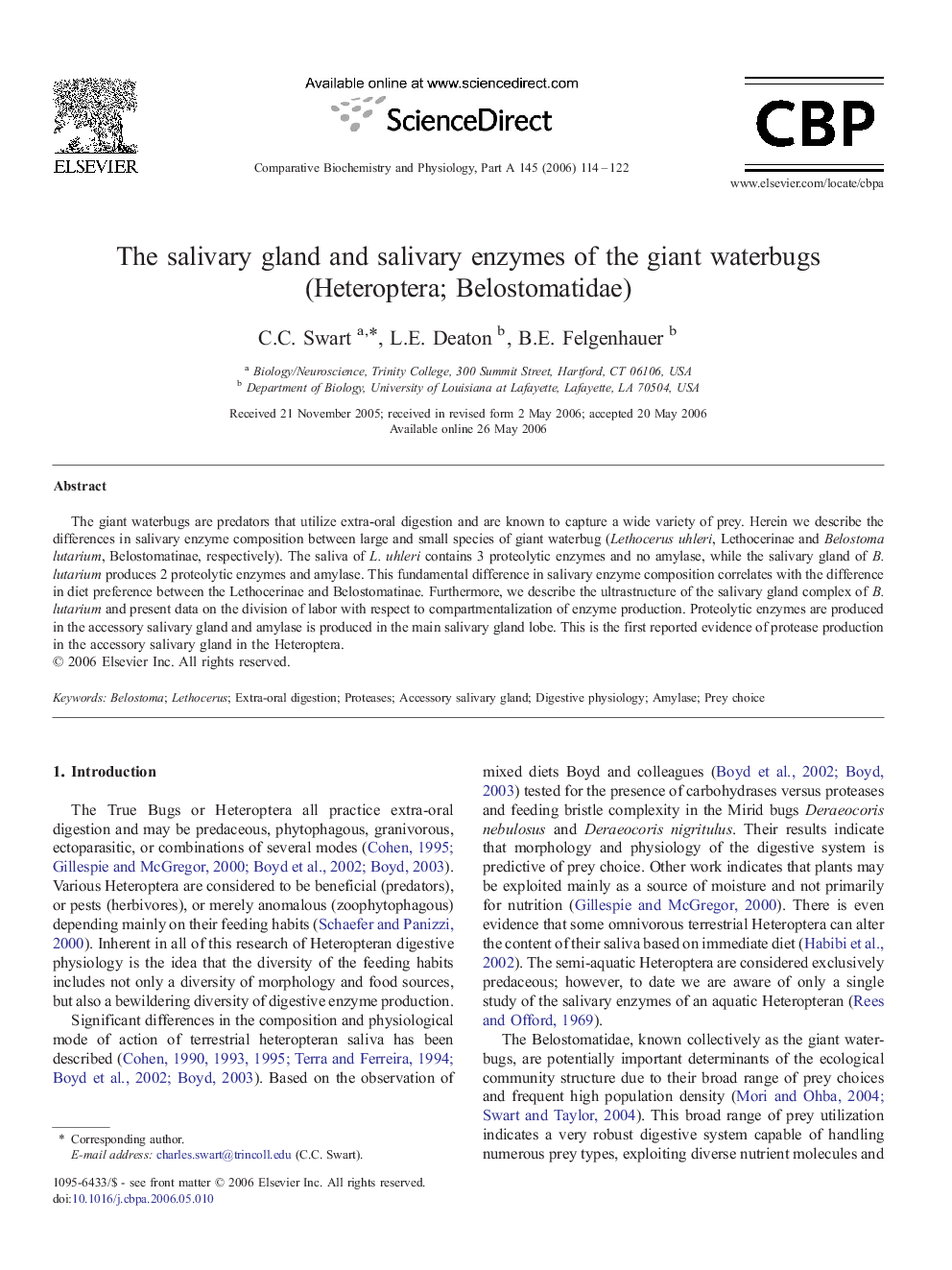| Article ID | Journal | Published Year | Pages | File Type |
|---|---|---|---|---|
| 1974323 | Comparative Biochemistry and Physiology Part A: Molecular & Integrative Physiology | 2006 | 9 Pages |
The giant waterbugs are predators that utilize extra-oral digestion and are known to capture a wide variety of prey. Herein we describe the differences in salivary enzyme composition between large and small species of giant waterbug (Lethocerus uhleri, Lethocerinae and Belostoma lutarium, Belostomatinae, respectively). The saliva of L. uhleri contains 3 proteolytic enzymes and no amylase, while the salivary gland of B. lutarium produces 2 proteolytic enzymes and amylase. This fundamental difference in salivary enzyme composition correlates with the difference in diet preference between the Lethocerinae and Belostomatinae. Furthermore, we describe the ultrastructure of the salivary gland complex of B. lutarium and present data on the division of labor with respect to compartmentalization of enzyme production. Proteolytic enzymes are produced in the accessory salivary gland and amylase is produced in the main salivary gland lobe. This is the first reported evidence of protease production in the accessory salivary gland in the Heteroptera.
